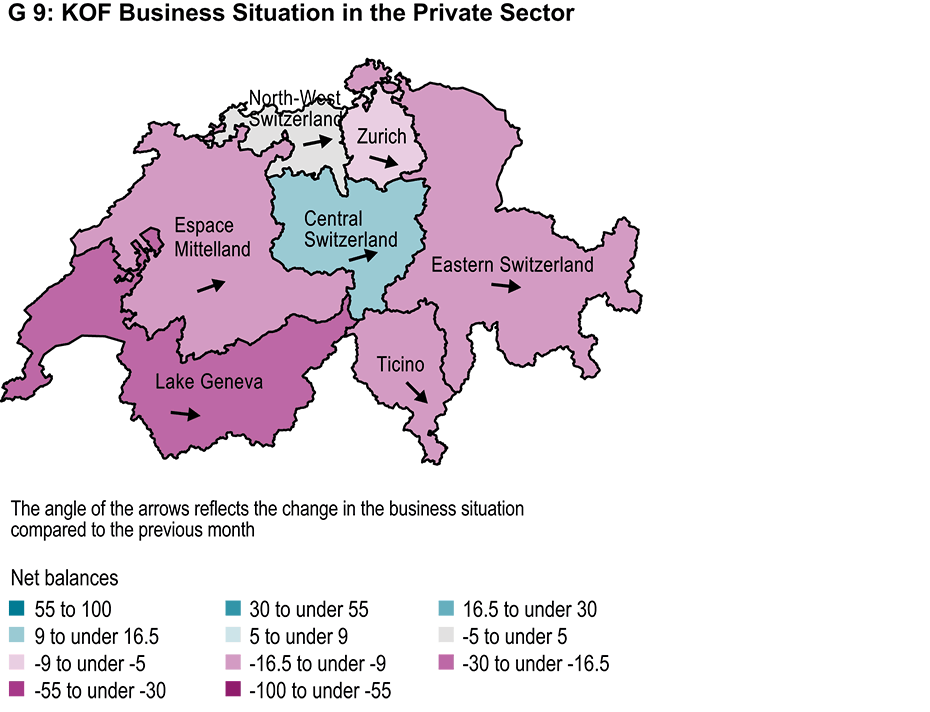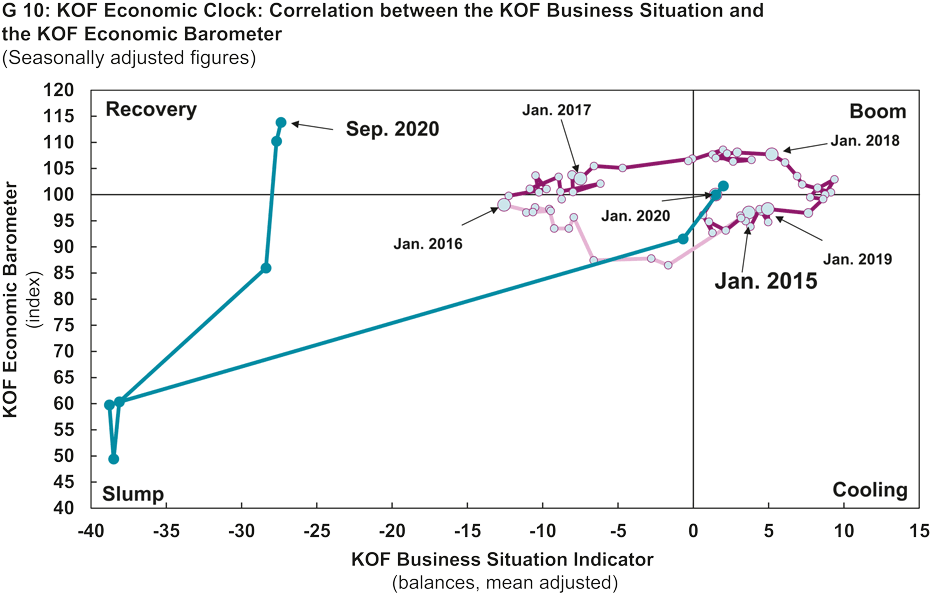KOF Business Situation Indicator: business virtually unchanged
- KOF Business Situation Indicator
- Swiss Economy
- KOF Bulletin
The KOF Business Situation Indicator has remained almost stagnant. Whereas it rose sharply in July and August, the indicator hardly increased at all in September (see G 8). After the economy noticeably improved in midsummer, this positive trend is now faltering. The economy is in a precarious position.

The virtually unchanged business situation in September was the result of divergent trends in the various sectors of the economy. In manufacturing the situation was again not quite as bad as in the previous month (see T 1). However, there is still a long way to go until business is satisfactory. The situation in financial and insurance services was also better than in the previous month. These two areas, which have performed fairly well, contrasted with the project engineering, construction and retail sectors, all of which are associated with building activity and did not quite manage to maintain their encouraging situation from the previous month.

The change in the business situation in September was also uneven from a regional perspective (see G 9). Encouraging trends in Espace Mittelland, Central Switzerland and Northwestern Switzerland contrasted with fairly negative trends in the Lake Geneva, Eastern Switzerland and Zurich regions and the strikingly adverse trend in Ticino.

The KOF Business Situation Indicator illustrates companies’ current business situation. The KOF Economic Barometer, on the other hand, is an indicator of economic prospects. The Economic Clock shows that the economy was under pressure in 2019 (see G 10). The KOF Economic Barometer remained below its long-term average throughout the year, and business activity gradually weakened. At the beginning of 2020 the outlook for the Swiss economy was more upbeat. However, the COVID-19 pandemic has led to a sharp slowdown in economic activity. The signs are now pointing to an economic recovery.

Explanation:
Chart G 8 shows the KOF Business Situation Indicator across all sectors included in the survey. The business situation of sectors that are only surveyed quarterly is kept constant in the interim months.
Chart G 9 shows the business situation in the main regions as defined by the Swiss Federal Statistical Office. The regions are coloured differently to reflect their business situation. The arrows within the regions indicate the change in the situation compared with the previous month. An upward-pointing arrow means, for example, that the situation has improved compared with the previous month.
The Business Situation Indicator in the KOF Economic Clock (G 10) is plotted against the KOF Economic Barometer. The indicator reflects the current business situation, while the barometer is a leading indicator of changes in activity. The clock can be divided into quadrants. During the recovery phase the business situation is below average but growth prospects are above average. At the peak of the economic cycle the situation and prospects are both above average. During the slowdown phase the situation is above average and the prospects are below average. At the bottom of the economic cycle the situation and prospects are both below average. Ideally the chart runs through the quadrants in a clockwise direction.
The KOF Business Situation Indicator is based on more than 4,500 reports from firms in Switzerland. Companies in industry, the retail sector, construction, project engineering, and financial and insurance services are surveyed monthly. Businesses in the hospitality, wholesale and other services sectors are surveyed during the first month of each quarter. These firms are asked, among other things, to assess their current business situation. They can rate their situation as either 'good', 'satisfactory' or 'poor'. The net balance of their current business situation is the difference between the percentages of 'good' and 'poor' responses.
Contact
KOF Konjunkturforschungsstelle
Leonhardstrasse 21
8092
Zürich
Switzerland